Follow Us:

Share
The Saab JAS 39 Gripen (pronounced [ˈgriːpɛn], meaning “griffin” in English) is a lightweight, single-engine multi-role fighter aircraft developed by the Swedish aerospace company Saab. It was designed as a modern replacement for the Saab 35 Draken and Saab 37 Viggen, both of which served in the Swedish Air Force (Flygvapnet).
The Gripen features a delta wing and canard design, integrating a relaxed stability system coupled with fly-by-wire flight controls. Its propulsion is provided by the Volvo RM12 engine, enabling the aircraft to reach speeds up to Mach 2. Later versions have been modified to meet NATO standards, including the capability for air-to-air refueling.
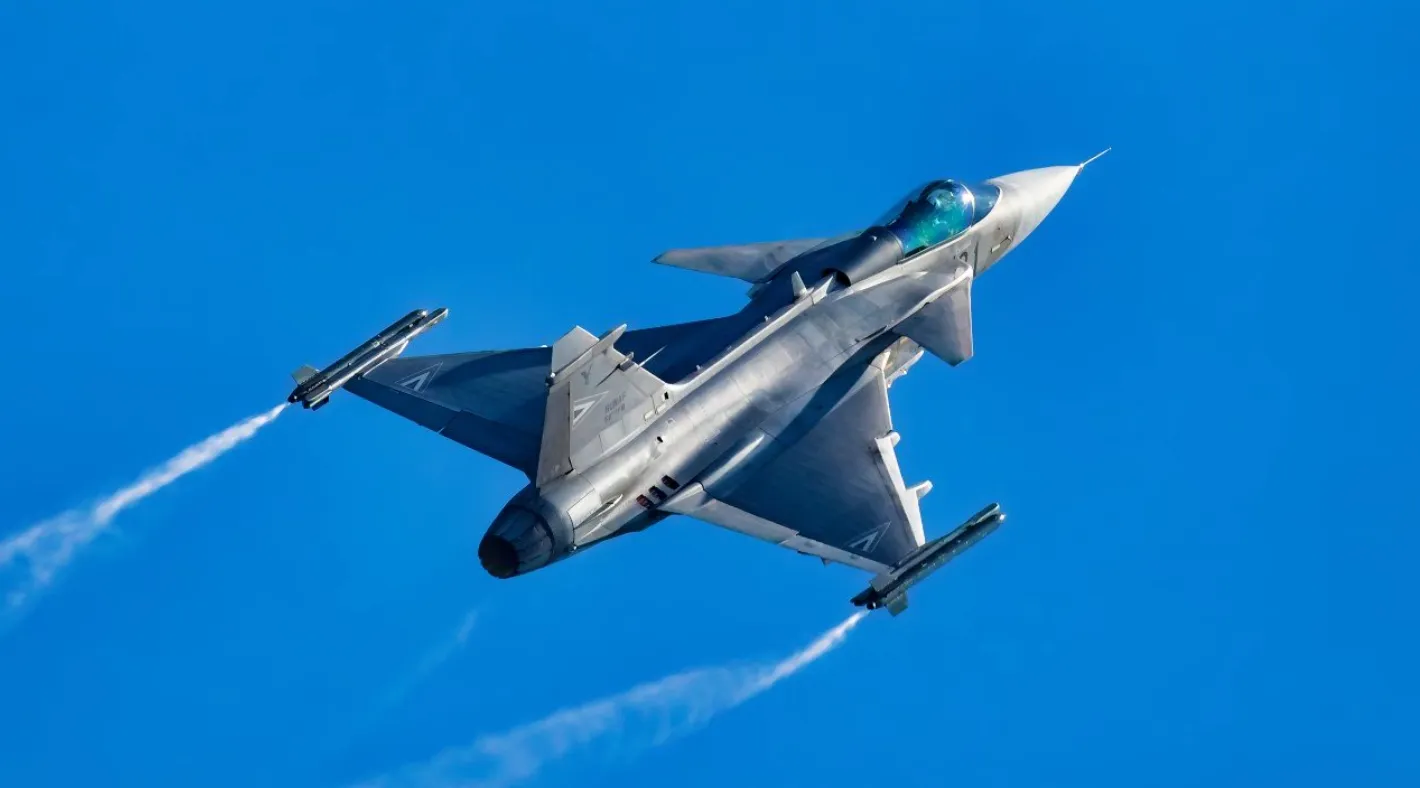
The development of the Gripen began in 1979, following a Swedish government initiative to create an aircraft capable of performing fighter, attack, and reconnaissance missions. This new platform was intended to replace the aging Draken and Viggen fleets. Saab’s design was selected, leading to the development of the Saab JAS 39 Gripen, which made its maiden flight in 1988.
However, during its early testing phase, the Gripen experienced two crashes, necessitating updates to its flight control software. After these revisions, the Gripen was officially introduced into service with the Swedish Air Force in 1996. Subsequent upgraded models, featuring enhanced avionics and extended mission capabilities, entered service in 2003.
A more advanced variant, the JAS 39E/F Gripen, is currently under development and has been referred to as the Gripen NG or Super-JAS. This version includes several major upgrades, such as a new General Electric F414G engine, an active electronically scanned array (AESA) radar, and a larger internal fuel capacity.
Saab has also proposed additional derivatives, including the Gripen Maritime, tailored for aircraft carrier operations, and an optionally unmanned version. Both Sweden and Brazil have placed orders for the Gripen E/F, while Switzerland initially selected it for procurement. As of 2013, over 247 Gripens have been manufactured.
In the late 1970s, Sweden initiated plans to replace its aging fleet of Saab 35 Draken and Saab 37 Viggen fighter jets. The Swedish Air Force needed a Mach 2-capable aircraft that could operate cost-effectively and perform well on short runways, in line with its dispersed basing strategy designed for potential invasions.
This plan, part of the Bas 90 system, required aircraft to take off and land on basic 800-meter-long, 17-meter-wide runways. A key goal was to design an aircraft smaller than the Viggen, yet capable of matching or surpassing its range and payload performance.
By 1979, the Swedish government launched a study aimed at creating a versatile fighter capable of handling “JAS” roles—Jakt (air-to-air combat), Attack (air-to-ground operations), and Spaning (reconnaissance). This vision called for a multirole or swing-role aircraft capable of performing several types of missions within a single deployment.

In 1980, Industrigruppen JAS (IG JAS, “JAS Industry Group”) was formed, a joint venture between Saab-Scania, LM Ericsson, Svenska Radioaktiebolaget, Volvo Flygmotor, and Försvarets Fabriksverk, the Swedish military’s industrial branch.
The chosen aircraft design featured a lightweight, single-engine configuration with a single-seat cockpit. It incorporated cutting-edge technologies such as fly-by-wire controls, canards, and a deliberately aerodynamically unstable design to enhance maneuverability.
Saab introduced the first Gripen fighter aircraft on April 26, 1987, coinciding with the company’s 50th anniversary. Although the initial plan was for the Gripen to take its first flight that same year, technical challenges with the flight control system delayed its debut by 18 months. Finally, on December 9, 1988, the prototype with serial number 39-1 made its maiden flight, lasting 51 minutes, with test pilot Stig Holmström at the controls.
During the early testing phase, concerns arose regarding the aircraft’s avionics, particularly the fly-by-wire flight control system (FCS) and its relaxed stability design. These concerns materialized on February 2, 1989, when the prototype crashed during a landing attempt in Linköping. Test pilot Lars Rådeström survived the accident, though he sustained a broken elbow.
The investigation concluded that the crash was caused by pilot-induced oscillation, linked to an issue with the FCS’s pitch-control routine.
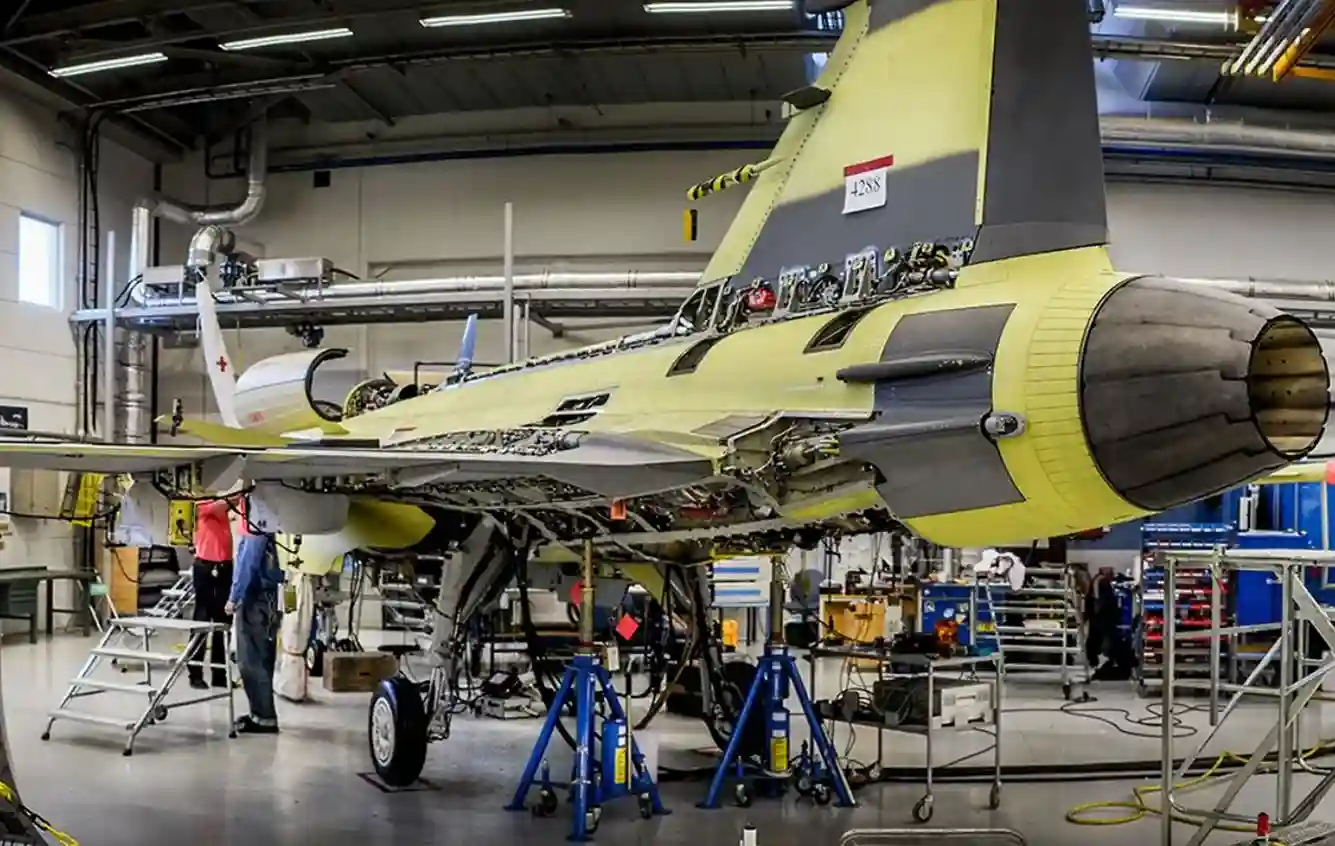
In response to this setback, Saab collaborated with the U.S. firm Calspan to implement software improvements. They utilized a modified Lockheed NT-33A to validate the enhancements, enabling test flights to resume after a 15-month hiatus.
However, another incident occurred on August 8, 1993, when production aircraft 39102 crashed during an aerial demonstration in Stockholm. Rådeström, again at the controls, lost control of the aircraft during a low-altitude roll, which led to a stall, forcing him to eject.
Saab’s investigation determined that excessive amplification of rapid control inputs contributed to the accident. This incident delayed further testing until December 1993, after necessary corrections were made.
The Saab JAS 39 Gripen is a versatile multirole fighter aircraft designed to be lightweight, agile, and equipped with cutting-edge, adaptable avionics. Its distinctive canard control surfaces generate positive lift across all speeds, while the delta wing’s substantial lift counterbalances the rear stabilizer’s negative lift at higher velocities, minimizing induced drag.
The Gripen’s deliberate instability, managed by a digital fly-by-wire system, enhances its maneuverability, reduces drag, and removes many traditional flight limitations. This system also improves its short takeoff and landing capabilities. The aircraft is engineered to handle high sink rates and endure the stresses of short landings.
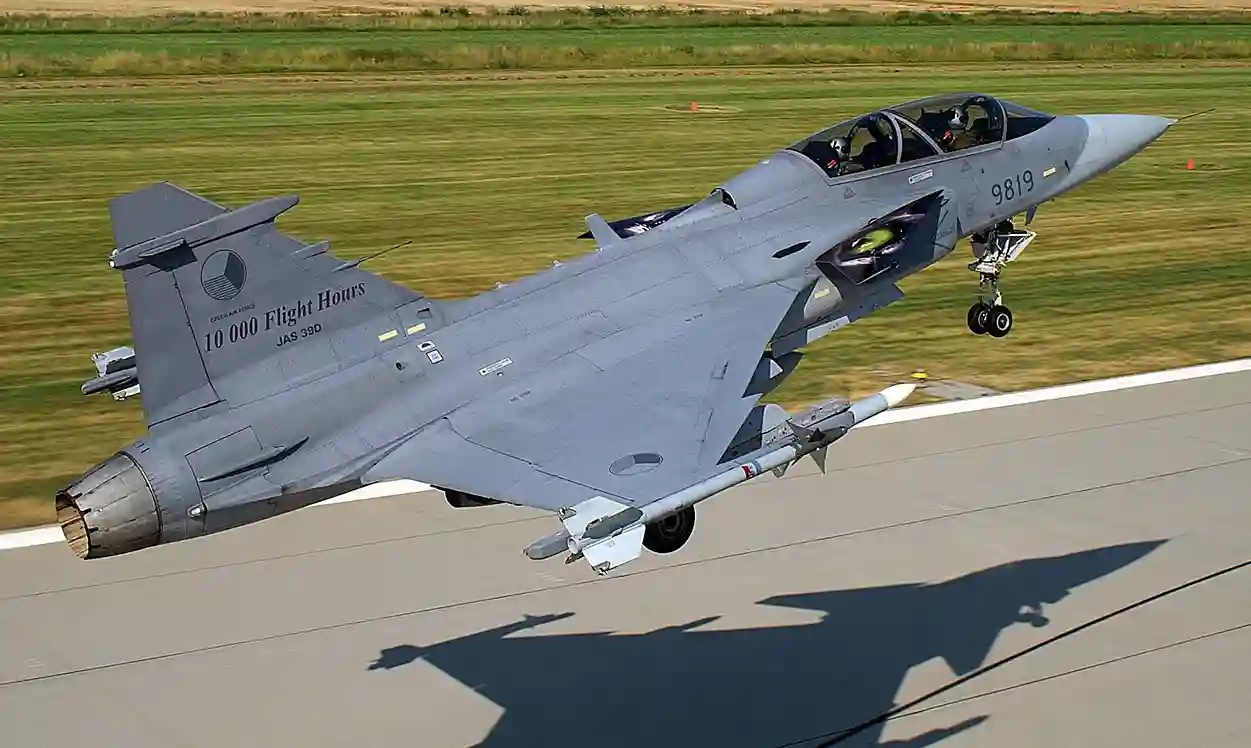
Additionally, it features a pair of air brakes on the sides of the rear fuselage, and the canards can tilt downward to function as air brakes, effectively shortening the landing distance. It can operate at an impressive angle of attack between 70 and 80 degrees.
Saab designed the Gripen with longevity in mind, aiming for a service life of about 50 years. The aircraft has low maintenance needs, thanks to the modular design of major systems like the RM12 engine and the PS-05/A radar, which also contribute to reduced operational costs and enhanced reliability.
The aircraft’s design prioritizes flexibility, allowing for easy integration of new sensors, armaments, and technologies as they develop.
The avionics system of the Saab JAS 39 Gripen fighter jet is fully integrated through five MIL-STD-1553B digital data buses, a process known as “sensor fusion.” This advanced integration enables the aircraft to be highly adaptable, allowing for continuous software updates that enhance its performance and expand its operational capabilities.
This makes the Saab JAS 39 Gripen a “programmable” aircraft, as it can accommodate new functions and equipment over time. The Ada programming language is utilized for the flight control systems, starting from the final prototypes produced in 1996 and continuing in all subsequent models.
Unlike its predecessor, the Viggen, which followed a fixed 18-month update cycle, Gripen’s software is frequently updated to introduce new features and improve overall functionality.
Throughout each mission, the Gripen digitally records data from its onboard sensors and cockpit activities. This data can be replayed in the cockpit for immediate review or extracted for detailed post-mission analysis using a data transfer unit, which also allows for easy uploading of mission data to the aircraft.
Like the Viggen, the Saab JAS 39 Gripen is designed to operate within a networked national defense framework, allowing real-time data exchange between other Gripen jets and ground stations.
According to Saab, the Gripen boasts “the world’s most advanced data link,” facilitating seamless communication and coordination. Its Ternav tactical navigation system integrates inputs from multiple onboard sources, such as the air data computer, radar altimeter, and GPS, to continuously calculate the aircraft’s precise location.
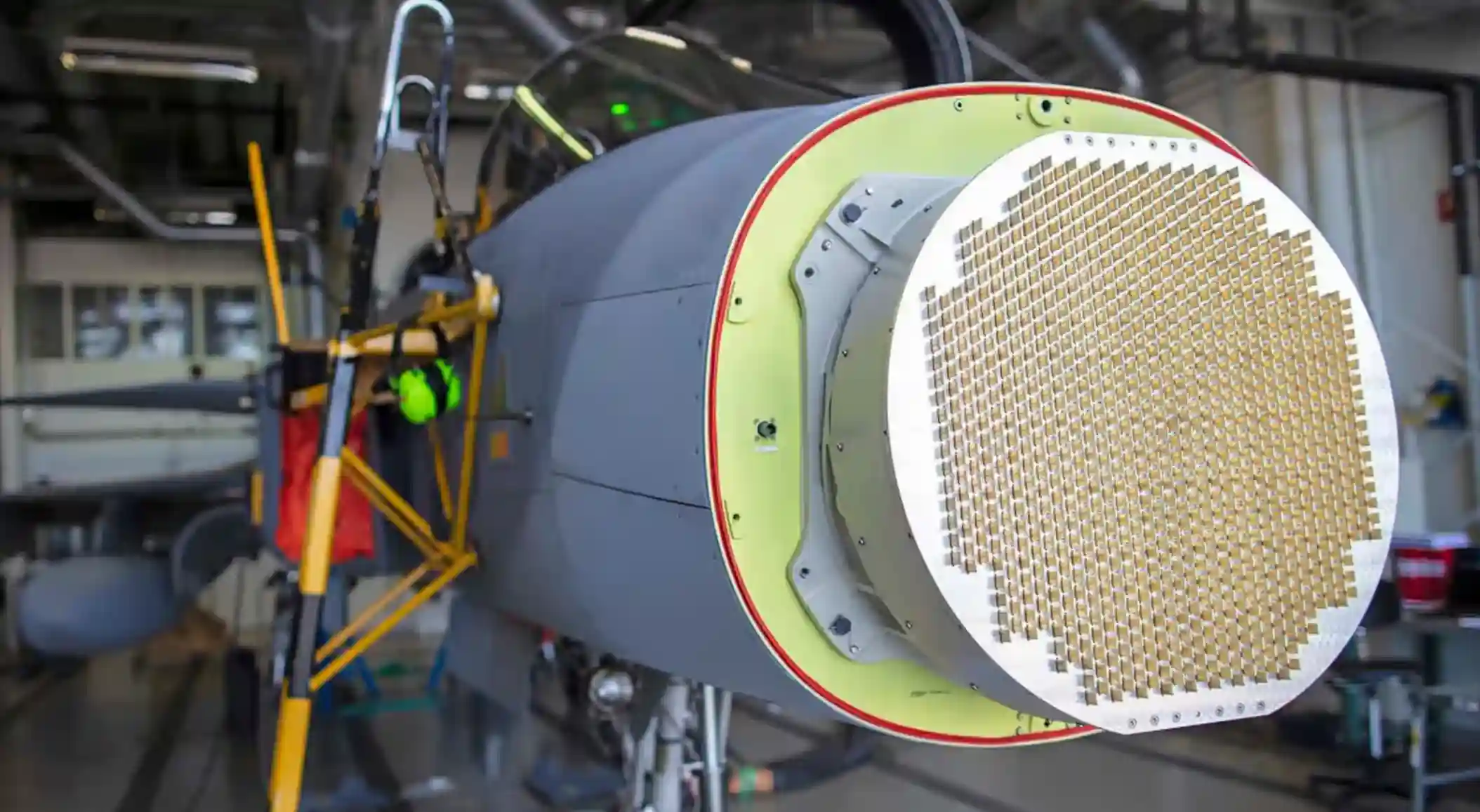
Upon entering service, the Saab JAS 39 Gripen was equipped with the PS-05/A pulse-Doppler X-band multi-mode radar, developed by Ericsson in collaboration with GEC-Marconi. This radar system is based on the Blue Vixen radar used in the Sea Harrier and later served as the foundation for the Eurofighter’s CAPTOR radar.
The PS-05/A radar is an all-weather system capable of detecting and identifying targets up to 120 km (74 miles) away, tracking multiple targets simultaneously across air, land, and sea. It can also guide multiple beyond-visual-range air-to-air missiles to different targets at once.
Saab has highlighted that the PS-05/A radar is versatile enough to handle various missions, including air defense, air-to-surface strikes, and reconnaissance.
The primary flight controls of the Saab JAS 39 Gripen adhere to the Hands On Throttle-And-Stick (HOTAS) concept, allowing the centrally positioned control stick to manage not only aircraft maneuvers but also cockpit displays and weapon systems.
The aircraft’s flight control system incorporates a triplex digital fly-by-wire technology, with a mechanical backup available for throttle operation. Pilots can access additional functions, such as communication, navigation, and decision-support data, through the up-front control panel, located above the central cockpit display.
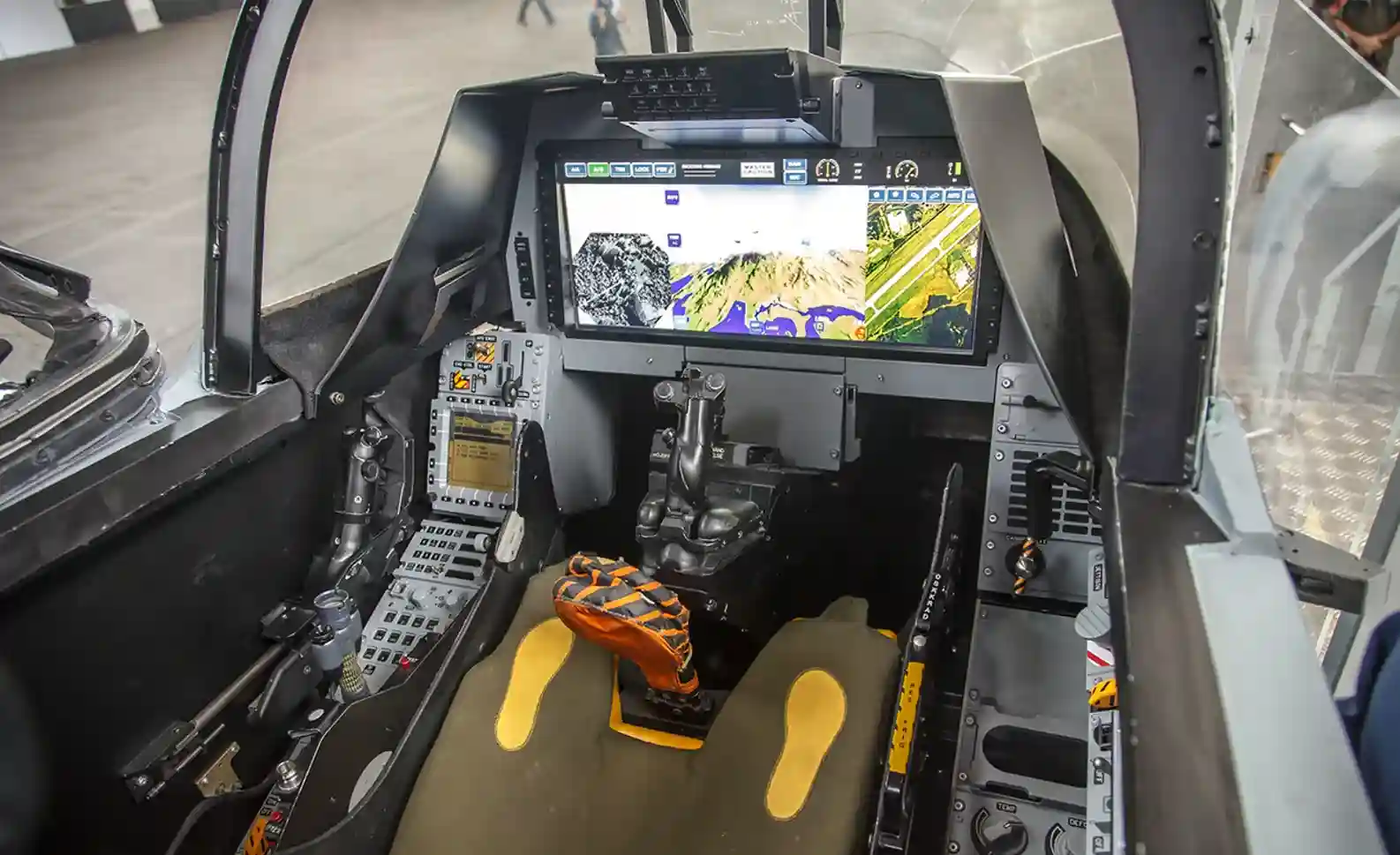
Saab’s EP-17 cockpit display system, integrated into the Gripen, enhances situational awareness and reduces pilot workload by efficiently managing and presenting critical information.
The Saab JAS 39 Gripen’s advanced sensor fusion technology integrates data from onboard sensors and databases, automatically analyzing and displaying relevant information to the pilot. This is achieved through a wide field-of-view head-up display (HUD), three large multi-functional color displays (MFDs), and, optionally, a helmet-mounted display system (HMDS).
Each of the three MFDs serves a specific purpose: the central display provides navigational and mission-related data, the left display presents aircraft status and electronic warfare details, and the right display delivers sensory and fire control information.
In two-seat variants of the Saab JAS 39 Gripen, the rear seat’s displays operate independently from the pilot’s front seat display arrangement, a feature that is particularly advantageous for electronic warfare, reconnaissance missions, and command and control operations.
As of January 2014, all operational Gripen aircraft were equipped with the Volvo RM12 turbofan engine, now produced by GKN Aerospace Engine Systems. This engine is a licensed derivative of the General Electric F404, fed by a Y-duct intake with splitter plates. Key modifications to the RM12 include enhanced performance and reliability, designed to meet stringent safety standards for single-engine operations.
Additionally, the engine offers increased resilience against bird strikes. Several subsystems and components of the engine were redesigned to lower maintenance requirements. By November 2010, Gripen aircraft had amassed over 143,000 flight hours without a single engine-related failure.

Rune Hyrefeldt, head of Military Program management at Volvo Aero, highlighted this achievement, remarking that it is a remarkable record for a single-engine aircraft.
The next-generation JAS 39E and F variants, still in development, are set to be powered by the F414G engine, a modified version of General Electric’s F414. This new engine can deliver 20% more thrust than the RM12, allowing the Saab JAS 39 Gripen to sustain supersonic speeds (Mach 1.1) without afterburners, even while carrying an air-to-air combat load—also known as supercruising.
The Saab JAS 39 Gripen is designed to accommodate a diverse range of weaponry beyond its standard single 27 mm Mauser BK-27 cannon (absent in the two-seat variants). Its armaments include air-to-air missiles like the AIM-9 Sidewinder, air-to-ground missiles such as the AGM-65 Maverick, and anti-ship missiles like the RBS-15.
In 2010, the Swedish Air Force’s fleet of Gripens underwent the MS19 upgrade, enhancing the aircraft’s compatibility with a broader array of weapons. This included the long-range MBDA Meteor missile, the short-range IRIS-T missile, and the GBU-49 laser-guided bomb.
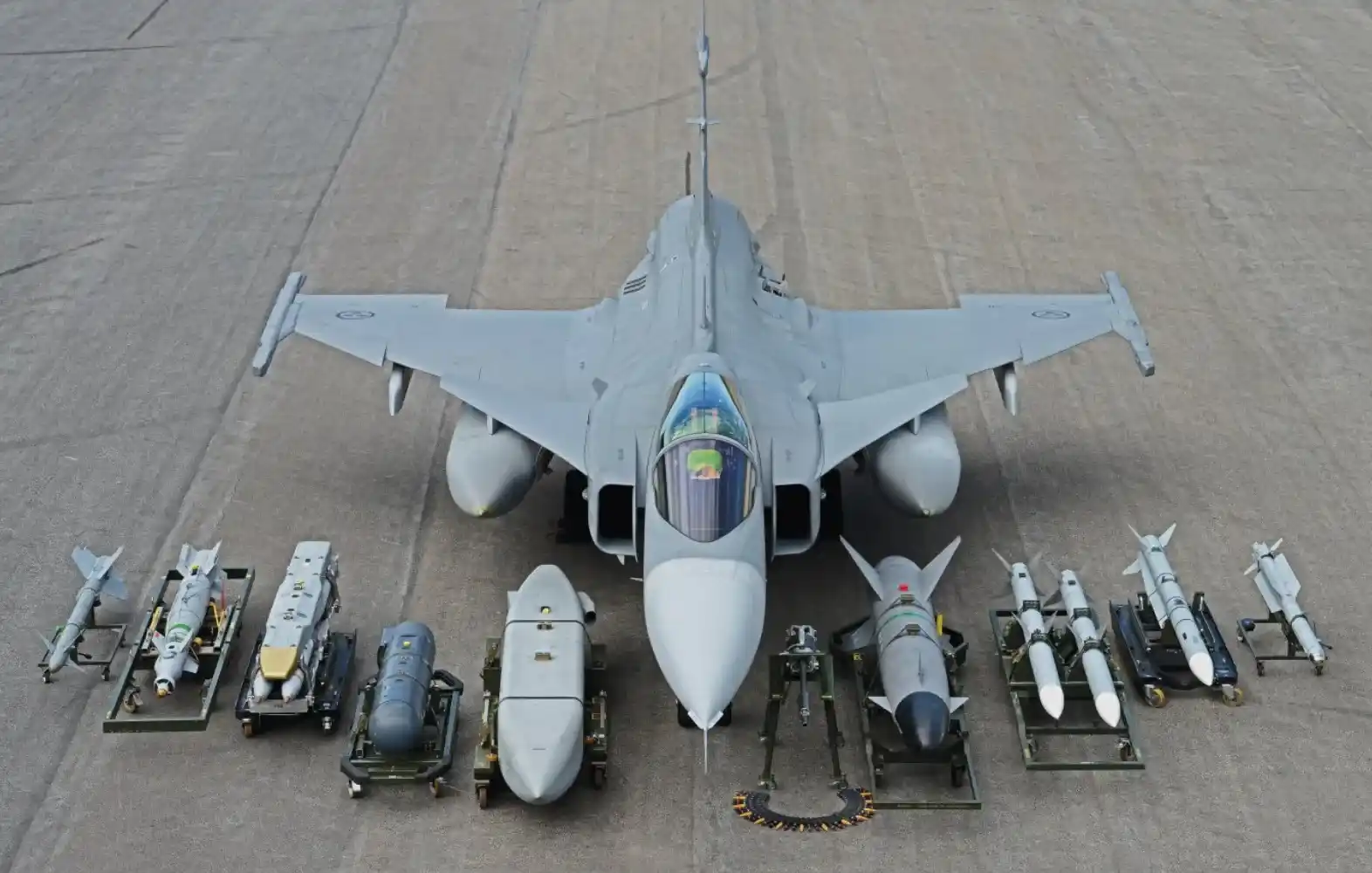
In terms of payload, the Saab JAS 39 Gripen can carry up to 6,500 kg (14,330 lb) of various armaments and external equipment during flight. This includes sensor pods for reconnaissance and targeting purposes, such as the Rafael LITENING targeting pod, Saab’s Modular Reconnaissance Pod System, and the Thales Digital Joint Reconnaissance Pod.
The aircraft is equipped with a sophisticated electronic warfare suite that can operate in passive mode to remain undetectable or actively jam enemy radar systems. It also features a missile approach warning system that passively tracks incoming missiles.
A major emphasis during the Saab JAS 39 Gripen’s design was on ease of maintenance. The aircraft’s structure and components were arranged to simplify servicing, with many systems requiring minimal or no maintenance. The Gripen is equipped with a Health and Usage Monitoring System (HUMS), which tracks the performance of critical systems and helps technicians in their inspections.
Saab, the manufacturer, runs a continuous improvement program, using data from HUMS and other sources to optimize the jet. Saab claims that the Saab JAS 39 Gripen has 50% lower operational costs compared to its closest competitors.
In 2012, a study by Jane’s Aerospace and Defense Consulting assessed the operating costs of various modern fighter jets. It found that the Saab JAS 39 Gripen had the lowest cost per flight hour (CPFH), factoring in fuel, pre-flight preparation, maintenance, and personnel expenses.
The Saab JAS 39 Gripen’s CPFH was approximately $4,700, significantly lower than the $7,000 CPFH of the F-16 Block 40/50, the next closest aircraft, which had 49% higher operational costs.
The Saab JAS 39 Gripen is a multi-role fighter aircraft developed by Saab, first entering service with the Swedish Air Force in 1996 as the JAS 39A. Several of these initial aircraft have since been upgraded to the advanced C standard, enhancing their capabilities.
The original version, the JAS 39A, was the first of the Gripen series to be operational, establishing a foundation for future enhancements and variants.
Designed primarily for training purposes, the JAS 39B is a two-seat variant of the 39A. It features modifications to accommodate an additional crew member, which necessitated the removal of the internal cannon and one of the internal fuel tanks. This adaptation led to an increase in the airframe length by 0.66 meters (approximately 2 feet 2 inches), making it well-suited for specialized missions and type conversion training.
The JAS 39C represents a NATO-compatible evolution of the Gripen, significantly expanding its capabilities in armament and electronic systems. This variant also includes the ability to conduct in-flight refueling, enhancing its operational range and versatility.
Similar to the JAS 39B, the JAS 39D is a two-seat version based on the 39C. It incorporates the same modifications to accommodate dual operations, making it ideal for training and various mission profiles.
Building on the technology demonstrated by the Gripen Demo, the Gripen NG introduces a host of enhancements over the JAS 39C/D. Key improvements include the installation of a more powerful F414G engine, the advanced Raven ES-05 AESA radar, increased fuel capacity, and a higher payload capability.
Additionally, it features two extra hard points for weaponry. These upgrades have escalated operational costs to an estimated 24,000 Swiss Francs (around US$27,000) per flight hour, while the flyaway cost has risen to approximately 100 million Swiss Francs (US$113 million).
The JAS 39E is the single-seat production version derived from the Gripen NG program, with orders placed by both Sweden and Brazil. In Brazil, this variant is designated as the F-39E.
Completing the family of Gripen aircraft, the JAS 39F is a two-seat version of the E variant. Brazil has ordered eight units, which are set to be developed and assembled in São Bernardo do Campo.
This variant is optimized for pilot training and combat roles, with a focus on backseat air battle management, electronic warfare, jamming, information warfare, and operating as a weapon system officer. In Brazil, it is referred to as the F-39F.
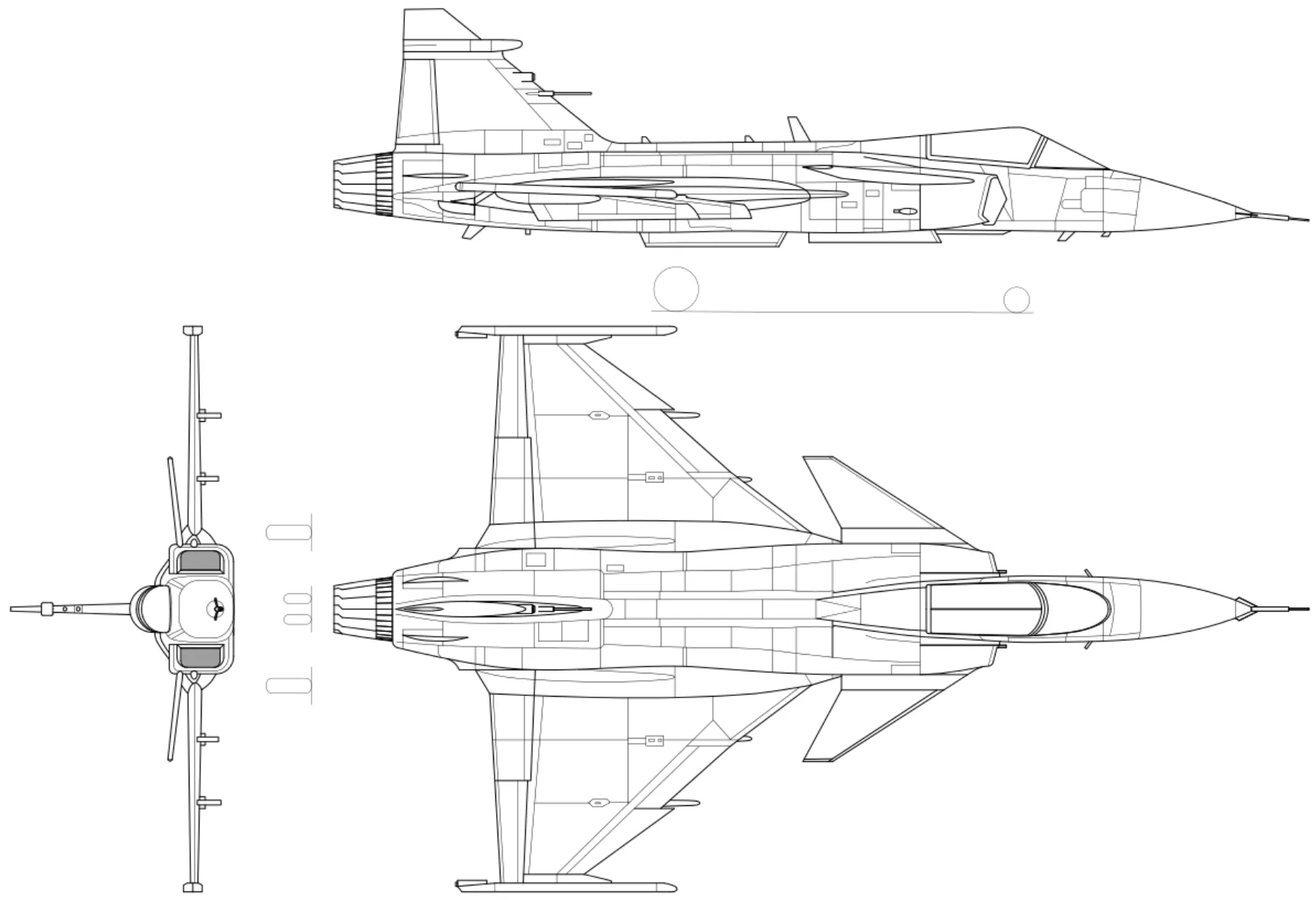
Share
Defense Feeds is publication focusing on informing, engaging, and empowering the world by providing accurate information from defense technology.
Powered by Defense Feeds © 2025 – All rights reserved.